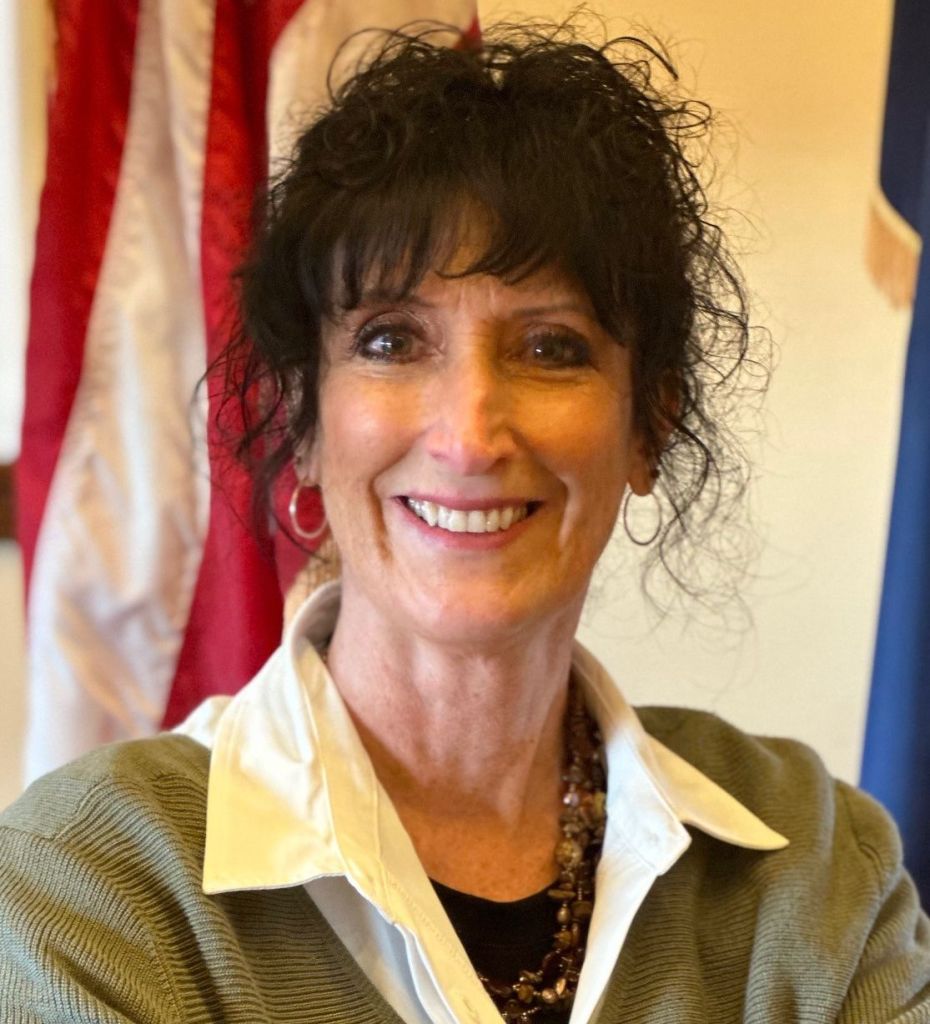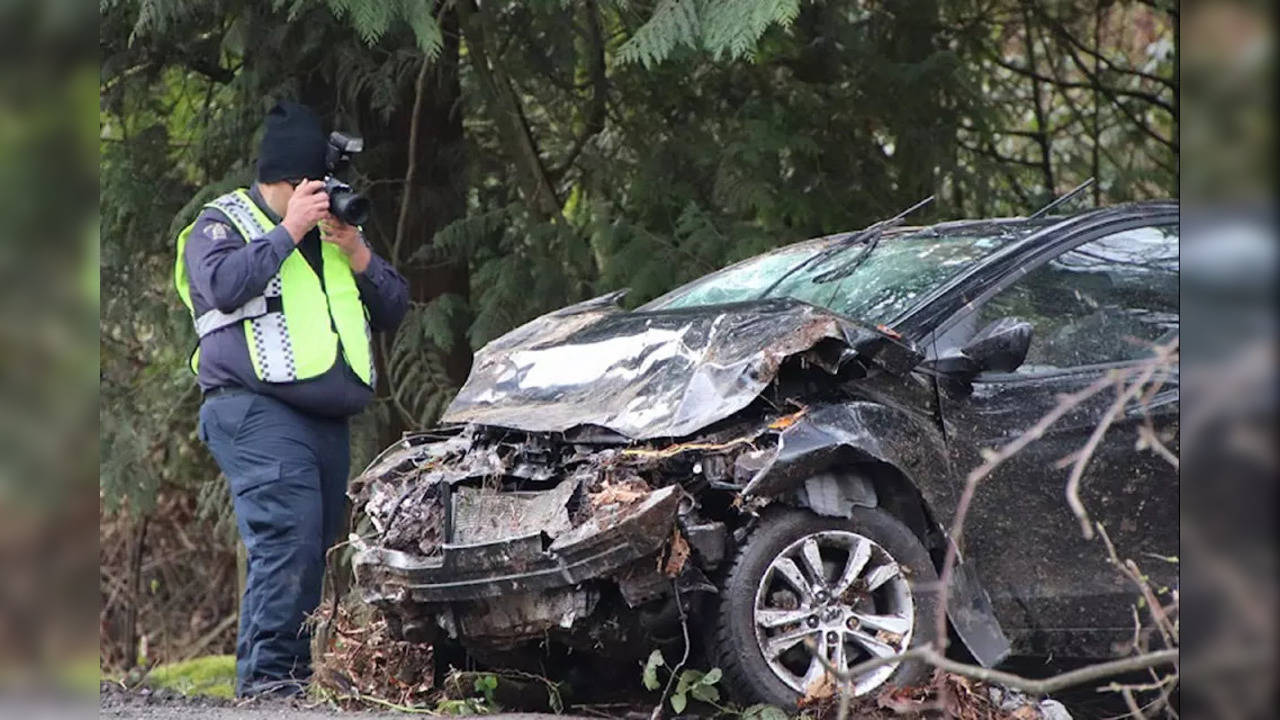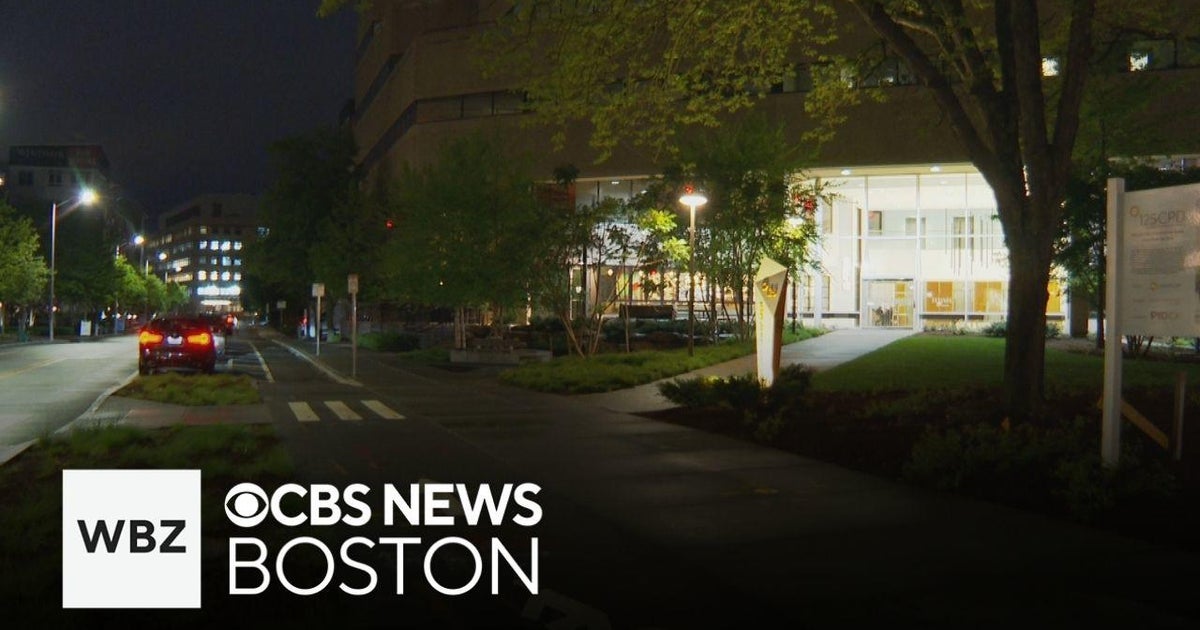North Dakota
McFeely: IRS records show more Fargo residents leaving for Moorhead, not vice versa

MOORHEAD — Kevin O’Leary is an idiot, but that we knew. He’s the “Shark Tank” guy
hired by North Dakota to hand out federal money Joe Biden funneled to the state
.
O’Leary jetted into town in March, all hollow words modeled after Donald Trump, to blow gas about how great North Dakota is for business (it is very welcoming, because it has to be) and how terrible neighboring Minnesota is (despite being home to 16 Fortune 500 companies).
Fargo’s Minnesota neighbor Moorhead, O’Leary said, looks like Cuba
. He later told a national TV host Minnesota’s policies are so bad that Moorhead has been shrinking for the last 25 years because its residents are fleeing to the gold-lined streets of Fargo.
Greasy lies all, from a greasy huckster. Moorhead and Minnesota are doing just fine, thank you, as all the high-falutin’ North Dakota Republicans could tell you from driving east to their lake cabins.
There is something we can tell you for certain, though, regarding the claim O’Leary and Republicans like to make that Minnesotans are running to North Dakota like Germans ran from East Berlin to West Berlin circa 1961.
It ain’t true.
It is false.
You might want to sit down for this one, my Republican friends.
More people moved from North Dakota to Minnesota than vice versa in 2020-21, the latest year available.
That’s not even the best one.
Deep breath and maybe a shot of whiskey, GOPers.
More people moved from Cass County in North Dakota to Clay County in Minnesota — Fargo to Moorhead — than vice versa.
Boom.
Oh, we already know what you’re saying through your clenched North Dakota teeth.
“But that’s because all the unemployed bums went to Minnesota for the welfare. Fargo got the rich people, Moorhead got the poor people. That’s still a good trade for us.”
You’d be wrong again. The folks moving from Fargo to Moorhead actually brought more total income than vice versa.
Boom again.
We know
these nuggets of goodness thanks to the Internal Revenue Service, which keeps migration data based on tax returns.
The IRS is then kind enough to post the info on its on website for all to see. Even Kevin O’Leary, if he was smart enough to look it up.
Here’s what we know, according to the IRS based on tax returns in 2020-21:
– North Dakota took 5,964 people from Minnesota during that time, equaling 3,634 tax returns. The adjusted gross income of those returns totaled $201,094,000, which averages out to $55,337 per return.
– Minnesota took 6,844 people from North Dakota, equaling 4,174 returns. The adjusted gross income of those returns totaled $242,850,000, averaging $58,182.
– Cass County (Fargo) took 1,426 people from Clay County (Moorhead), equaling 906 returns. The adjusted gross income of those returns totaled $48,489,000, averaging $53,520.
– Clay County (Moorhead) took 1,683 people from Cass County (Fargo), equaling 999 returns. The adjusted gross income of those returns totaled $50,507,000, averaging $50,559.
Minnesota had a net gain of 880 people from North Dakota, including 257 who moved from Fargo to Moorhead.
North Dakota, in fact, was the second-highest contributor to Minnesota’s inflow migration, according to the IRS.
Here’s a good one from
the conservative Center of the American Experiment:
Between 2011-2012 and 2019-2020, Minnesota had a net migration gain of 7,785 from North Dakota, according to the IRS.
Stick that in your blowhole and smoke it, O’Leary.
States like Wisconsin, Florida, Texas and Arizona all took more people from Minnesota than vice versa in 2020-21. Florida, for example, attracted 9,741 people from Minnesota while only 3,975 moved the other way. That’s a net of 5,566 for the Sunshine State … which is not surprising. It’s the Sunshine State and not frozen seven months of the year.
But the idea Minnesota’s taxes or Democratic Gov. Tim Walz are contributing to its residents fleeing for the low-tax, conservative haven of North Dakota just isn’t true.
Now if you’re talking South Dakota, that’s a little different story. Its Republican governor can brag a little bit. Maybe she should run for president.
Mike McFeely is a columnist for The Forum of Fargo-Moorhead. He began working for The Forum in the 1980s while he was a student studying journalism at Minnesota State University Moorhead. He’s been with The Forum full time since 1990, minus a six-year hiatus when he hosted a local radio talk-show.

North Dakota
North Dakota Polynesian Club celebrates culture at PAC Fest

BISMARCK, N.D. (KFYR) – A fairly new group, the North Dakota Polynesian Cultural Club, hosted its first Pacific Island, Asian, Arts and Culture Festival, or PAC Fest for short.
The North Dakota Polynesian Club invited the public to come eat cultural food, watch performances of cultural dances and listen to special speakers at Lord of Life Lutheran Church.
Event organizer, DJ Lamyuen, says he hopes to bring attention to his community.
“The goal and the mission is to bring awareness to our Pacific Islander and Asian heritage,” said Lamyuen.
The performances featured included the Bismarck YMCA belly dancers and traditional Indian dances, celebrating the different ways of life that make the Pacific Islands and Asia diverse. But, the group welcomed everyone from any background to join the celebration.
“That’s all that matters, that we can enjoy each other and different cultures by food, by music, by dance, and that’s all that matters in today’s society,” said Moses Timaly, member of the North Dakota Polynesian Club.
The hope is that this event, and the club, can create a sentiment of unity between the people of Bismarck-Mandan, regardless of where they’re from.
“Not a lot of people out here have resources or friend groups, so this is like an opportunity to kind of get together and know your neighbors and know the community,” said Lamyuen.
A “Best Dressed” Award was also given to whoever wore their cultural regalia or traditional clothing the best.
The group also enjoys working with a variety of nonprofit organizations, such as Bismarck Global Neighbors.
Copyright 2024 KFYR. All rights reserved.
North Dakota
Federal Reserve official says he looks to Bakken for insight on economy

A national banking official said he looks to North Dakota’s oil industry for clues about the health of the region’s economy.
“The Bakken, and North Dakota, is very interesting in giving me insight into what’s happening here and what it means for the broader economy,” Neel Kashkari said Thursday, May 16, while speaking at the Williston Basin Petroleum Conference in Bismarck.
Kashkari is president of the Federal Reserve Bank of Minneapolis, which serves North Dakota, South Dakota, Montana, Minnesota, as well as part of Wisconsin and Michigan. The Federal Reserve Banks are independent financial institutions that manage the U.S. economy.
In ordinary circumstances, when the economy is healthy, unemployment is low and the average rate of inflation is about 2%. However, if one of those factors is thrown out of whack, the Federal Reserve may decide to intervene.
“If the economy is growing too slowly, we will traditionally cut interest rates to try to give it a boost,” Kashkari said. “If the economy is overheating and inflation is too high, like recent experience, we will raise interest rates to try to tap the brakes in the economy to bring inflation back down.”
The Federal Reserve conducts extensive research to help inform those decisions, he said — including looking at employment trends in the Bakken.
“There have been times when the labor market here is incredibly tight, and it’s not been so tight around the U.S. economy, and you’re drawing in workers from all over America to come here — creating opportunity, high wages, and also challenges here in the local economy,” Kashkari said of North Dakota.
Michael Achterling / North Dakota Monitor
Recently, that hasn’t been the case, though. The whole country has had more jobs available than workers to fill them.
“If you have a particularly hot sector, you can’t simply draw workers from the rest of the country, because everyone around the rest of the country also has tight labor markets,” he said.
According to Kashkari, tribal economies are another important part of the Minneapolis Federal Reserve’s research. That’s because even when the U.S. economy is strong, tribes often face barriers that prevent them from accessing that wealth.
Their hope is to identify policies that governments can use to break down those barriers.
“Tribal economies have a unique set of challenges,” Kashkari said. “The economy may do well, different businesses may do well, and we still have people who are not participating in our economy.”
So where is the U.S. economy right now?
A mix of factors — including COVID-19, supply chain issues, an increased demand for consumer goods and Russia’s invasion of Ukraine — caused global inflation to surge in 2021, 2022 and 2023.
These days, however, the economy is doing pretty well, Kashkari said.
Nationwide unemployment is relatively low — it was under 4% as of the end of April, according to the U.S. Bureau of Labor Statistics. And while inflation is still rising more quickly than ideal at around 3.5%, it’s a far cry from its peak of 9% in late 2022.
Consumer spending is also strong.
“As much gloom as there appears to be when people are surveyed about how they feel about the economy, most people are spending like they feel pretty good about the economy,” he said. “If you go on airplanes, they’re usually full. If you go to restaurants, they’re usually full. If you go to a hotel, they’re usually busy.”
The housing market has been unexpectedly resilient, too, he said. It’s remained competitive even after a series of mortgage hikes by the Federal Reserve in 2022 and 2023.
The average rate for a 30-year fixed mortgage hovered around 3% before 2022, but is about 7.5% today.
“We think that there’s a pent-up demand for housing,” Kashkari said. “There’s been a pent-up shortage of housing across our economy for the last decade.”
The conference, which has more than 2,200 attendees, continues through Thursday.
This story was originally published on NorthDakotaMonitor.com
______________________________________________________
This story was written by one of our partner news agencies. Forum Communications Company uses content from agencies such as Reuters, Kaiser Health News, Tribune News Service and others to provide a wider range of news to our readers. Learn more about the news services FCC uses here.
North Dakota
Online guide, resources provide North Dakota Voters with election info

Extensive election-year resources have been updated and launched on Forum Communications Co. websites to provide voters with timely information about candidates, the voting process and news stories about the election.
The
free voter’s guide
allows users to enter an address to create a sample ballot with the races and candidates on the June 11 ballot. All candidates across the state — in local, state and federal races — received an invitation to participate by uploading a photo, biographical details including campaign links, and answers to several questions.
This marks the third election cycle in which Forum Communications partnered with the League of Women Voters of North Dakota as part of its nationwide Vote411 initiative.
“Responding to VOTE411 is a great way for candidates to get their information out to voters,” Mary C. Tintes, LWVND vice president, said in a news release. “The upcoming June election is also city election day in North Dakota, and we want to make it easier for voters to learn about their local candidates who will serve in the city offices that are so important in our day-to-day lives.”
VOTE411.org is the League of Women Voters’ one-stop shop for nationwide voting and election information. Some of VOTE411’s key features are candidate and statewide ballot measure information, voter ID information, absentee ballot information, and a polling place locator.
Since 2020, Forum Communications has collaborated with LWVND to give greater visibility to voters about the election process and candidates running for office. Candidate participation has grown each year and users across the state can find information about local candidates, provided the candidates participate.
“The voter’s guide and other resources available through our websites provide an important service to anyone casting a ballot this year,” said Steve Wagner, director of content operations for Forum Communications.
“We want to connect readers with the information they need about candidates and the election. It’s a role we take seriously as community journalists.”
In addition to the voter’s guide, Forum Communications also provides
an online page with answers to frequently asked questions
.
The page, along with stories about the election and candidates, can be found on the websites for The Forum of Fargo-Moorhead, Grand Forks Herald, Jamestown Sun and Dickinson Press.
Voting has already begun in North Dakota through absentee ballots, which need to be requested. Some counties also offer mail-in voting and early voting at designated locations.
To be eligible to vote in North Dakota, an individual must be a U.S. citizen, a resident in the state for at least 30 days, and at least 18 years old on Election Day. North Dakota does not have voter registration, but voters are required to present a valid ID to cast a ballot.
The voter’s guide will remain available through November’s general election. It will also include details about Minnesota races and candidates before the state’s Aug. 13 primary.
-

 Politics1 week ago
Politics1 week agoOhio AG defends letter warning 'woke' masked anti-Israel protesters they face prison time: 'We have a society'
-

 Finance1 week ago
Finance1 week agoSpring Finance Forum 2024: CRE Financiers Eye Signs of Recovery
-

 Politics1 week ago
Politics1 week agoBiden’s decision to pull Israel weapons shipment kept quiet until after Holocaust remembrance address: report
-

 World7 days ago
World7 days agoIndia Lok Sabha election 2024 Phase 4: Who votes and what’s at stake?
-

 News1 week ago
News1 week agoThe Major Supreme Court Cases of 2024
-

 News1 week ago
News1 week agoTornadoes tear through the southeastern U.S. as storms leave 3 dead
-

 World1 week ago
World1 week agoA look at Chinese investment within Hungary
-

 Politics1 week ago
Politics1 week agoTales from the trail: The blue states Trump eyes to turn red in November

















